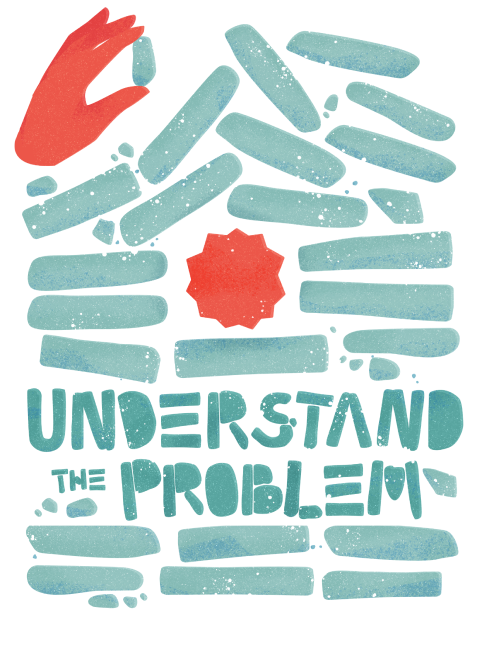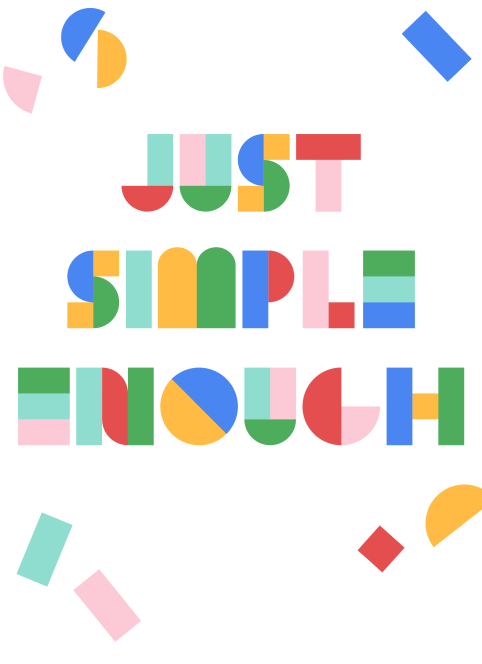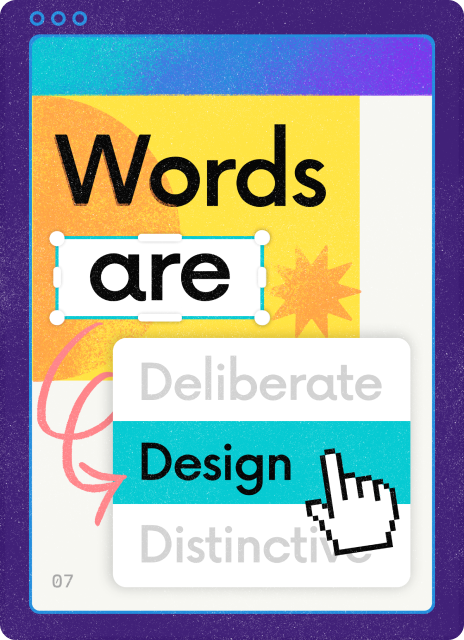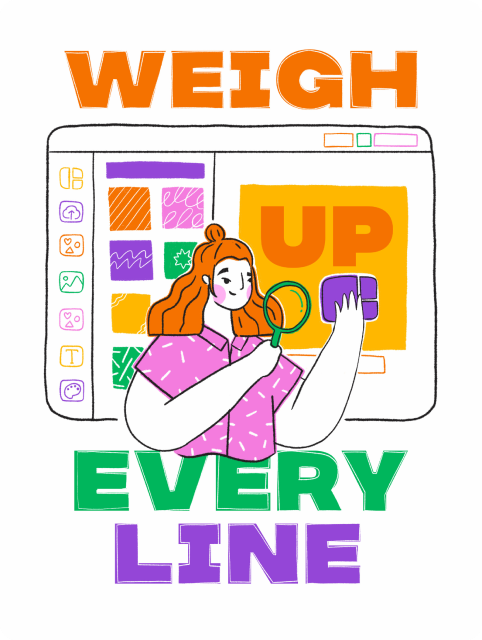Principles
Understand the problem
Having a clear definition of the problem that you're trying to solve before you start designing is incredibly important to the design process– it can stop you from chasing your own tail, trying to find the solution to a problem that keeps changing.

Great defaults
It's not a sin to have more powerful options available to our customers, but if they don't tweak any settings or change any values, they should still end up with a great design. Make sure that any new feature is optimized to create great design right out of the box.

Just simple enough
We always strive for a simple product that is understandable by a non-designer. This means no jargon and no knobs that only a professional can figure out how to use. But "simple" is not the opposite of "powerful". Canva needs to provide the flexibility and usefulness of a real design tool in an easy-to-use package.

Words are design
What customers read is as important to their experience as the interactions and visuals. Clear and meaningful labels and written content are an important part of an interface, therefore language and writing are an important skill to have as a designer.

Weigh up every line
We want customers to feel a connection with the people who make Canva. This should be reflected in the tone of voice and interface cues that we use to communicate with our customers. We are all humans, so let your human side show, but know when it's appropriate to be more playful and when you have to communicate serious matters.

Beginners become experts
While we should make sure that new customers have a great experience creating their first design, they should also find it exciting to create their 100th design and be able to create new and unique content each time they come back. This means gradually handing over the reins of design to them as they become more confident with the product and with their own skills.
